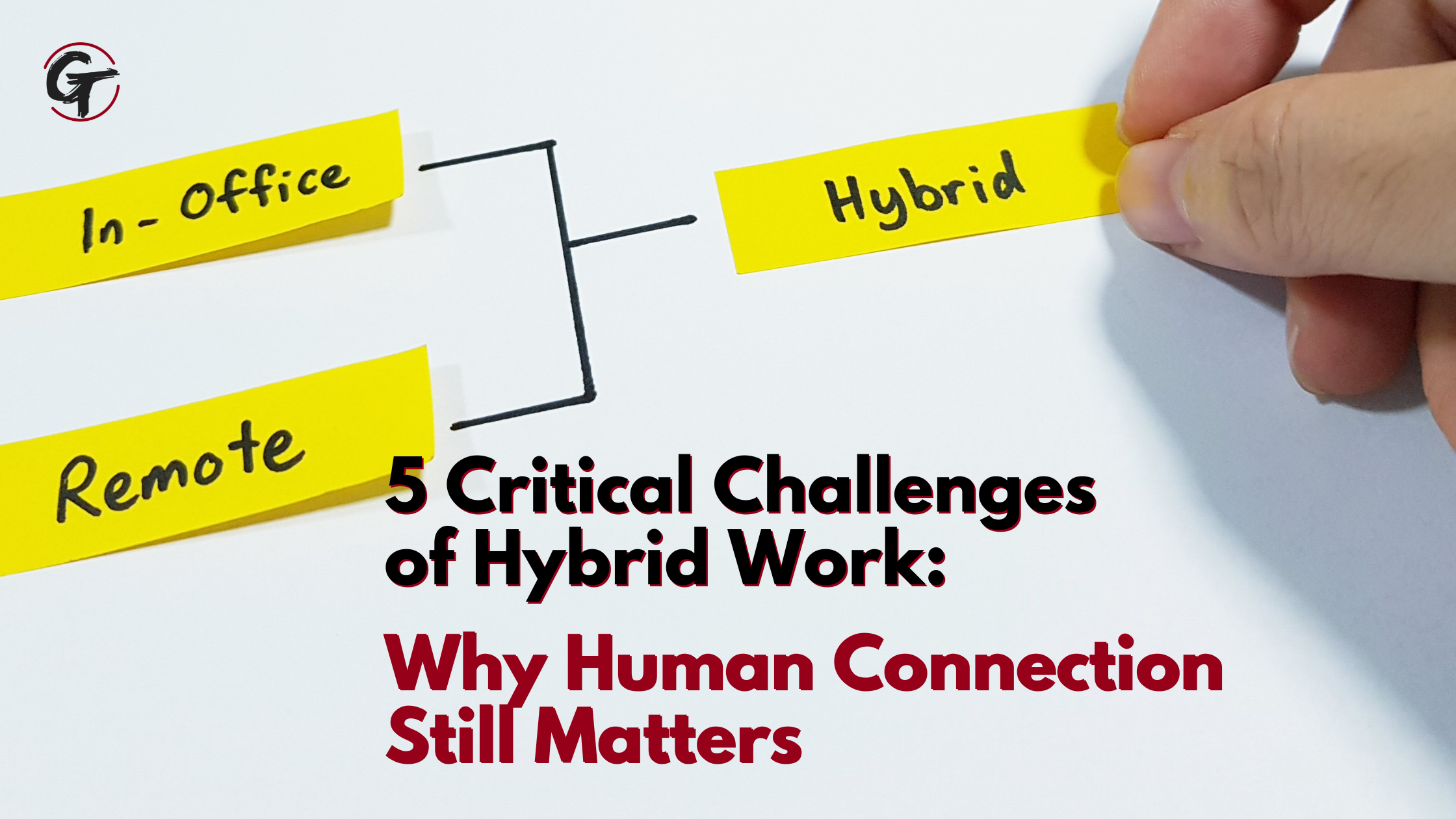Let’s talk about the elephant in the Zoom room: COVID didn’t just change where we work – it fundamentally shifted HOW we work, and not always for the better. While many celebrate the “new normal” of remote and hybrid work (and yes, there are definite benefits), I’m concerned about what we’re losing in the process.
Here’s what keeps me up at night: We have an entire generation of professionals who have never experienced the magic of daily office life. They’ve never had those spontaneous brainstorming sessions at the water cooler – heck, some of them probably think a water cooler is just another office supply. And while your eye rolls during a Zoom meeting might show up in HD, it’s just not the same as the energy exchange that happens when humans share physical space.
Look, I get it. Hybrid work is here to stay. But as someone who’s spent years building high-performing teams and cultures, I can tell you with absolute certainty that no amount of virtual happy hours or emoji reactions will ever replace the chemistry that happens when people work side by side. Those casual conversations in the break room, the nonverbal cues you pick up in meetings, and the trust built through daily, face-to-face interactions – that’s where the real organizational magic happens.
So while we navigate this brave new world of hybrid work, let’s get real about the challenges we’re facing and how to tackle them head-on. Here are the five biggest hurdles I’m seeing organizations struggle with:
1. Culture and Connectedness Let’s be honest – building a strong culture is hard enough when everyone’s in the same room. Now try doing it when half your team is working from their kitchen table. Organizations are struggling to:
- Keep their culture alive when people aren’t physically together
- Help remote workers feel like they’re actually part of the team
- Create genuine connections that go beyond virtual high-fives
- Build trust when face-to-face time is limited
The solution? Leaders need to get creative and intentional about creating meaningful connection points – both online and offline.
2. Communication and Coordination If you think managing communication was challenging before, hybrid work just turned it up to eleven:
- Bridging the gap between in-office conversations and remote team members
- Running meetings that don’t make hybrid participants feel like second-class citizens
- Preventing the dreaded information black holes
- Keeping everyone in sync when schedules are all over the place
You need more than just good tech – you need clear protocols that make sense for everyone, regardless of where they’re working.
3. Productivity and Effectiveness Here’s a truth bomb: productivity isn’t about watching people work. It’s about results. But hybrid environments create new challenges:
- Making sure everyone has the right tools (and actually knows how to use them)
- Managing distractions (both at home and in the office)
- Keeping work flowing smoothly across distributed teams
- Measuring success fairly for all work arrangements
The key? Focus on outcomes, not desk time, and give people what they need to succeed wherever they are.
4. Work-Life Balance Remember when we could just leave work at work? Yeah, those days are gone:
- The struggle to “turn off” when your office is your home
- Battling burnout when work is always just a laptop away
- Maintaining healthy boundaries in a boundary-less world
- Setting realistic expectations about availability
We need to get serious about protecting personal time – and that starts with leadership walking the talk.
5. Equity and Inclusion This is the big one, folks. Hybrid work could either break down barriers or build new ones:
- Making sure remote workers aren’t out of sight, out of mind
- Fighting the natural tendency to favor the people we see every day
- Creating fair advancement opportunities for everyone
- Building an inclusive culture that works for all working styles
Leaders, this is on us. We need to actively design systems that work for everyone, not just the people sitting in the office.
So, what’s the solution?
While we can’t (and shouldn’t) go back to the old ways entirely, we can create a hybrid environment that actually works. Here’s my practical playbook for getting people back to the office in a way that makes sense:
Make In-Office Time Matter Let’s be strategic about when people come in. Random office appearances don’t build culture – intentional, coordinated face-time does:
- Designate specific “collaboration days” (Tuesday/Thursday tends to work well)
- Stagger different departments throughout the week if you’re tight on space
- Be crystal clear about expectations – no one likes guessing games about when they should show up
Give Them a Reason to Show Up Look, if you want people to brave traffic and swap their sweatpants for real clothes, make it worth their while:
- Spring for team lunches or bring in great coffee
- Schedule the meaningful meetings and workshops on in-office days
- Create experiences that actually make people want to be there
- Plan team activities that are better in person than on screen
Rethink Your Space Your office needs to be more than just a room full of desks:
- Create inviting collaboration spaces that make the “water cooler effect” happen naturally
- Set up comfortable breakout areas for impromptu discussions
- Make sure your tech setup doesn’t make hybrid meetings feel like a bad wedding where half the family is on FaceTime
Lead From the Front Want to know the fastest way to kill office culture? Leaders who preach “return to office” from their home office. Instead:
- Have leadership present and visible on designated office days
- Create opportunities for informal interactions with leadership
- Show (don’t just tell) why being together matters
Keep It Flexible Here’s the thing – one size doesn’t fit all. Your hybrid approach needs to:
- Account for different team needs and personal situations
- Stay open to feedback and be willing to adjust
- Focus on results rather than rigid rules
- Remember that trust goes both ways
Make Technology Your Friend, Not Your Crutch Yes, we need good tech, but:
- Use it to enhance in-person collaboration, not replace it
- Ensure remote participants can fully engage in office-based discussions
- Don’t let technology be an excuse for avoiding real connection
The Secret Sauce? Integration and Intention The most successful hybrid workplaces don’t just throw together a bunch of random strategies – they thoughtfully integrate all these elements into a cohesive experience. Every decision, from when teams come in to how the office is set up, should support your ultimate goal: creating meaningful human connections that drive better business results.
Remember, this isn’t about forcing people back to the old ways of working. It’s about creating an environment where people actually want to come together, where the office adds real value to their work experience, and where relationships can flourish naturally.
The Bottom Line We’re all figuring this out together, and there’s no perfect solution. But if we focus on creating intentional opportunities for connection while respecting the flexibility that modern work demands, we can build something that might actually be better than what we had before.
The future of work isn’t about choosing between remote and in-person – it’s about being smart enough to take the best of both and create something that works for everyone. And yes, that might mean bringing back the water cooler – metaphorically AND literally speaking.




